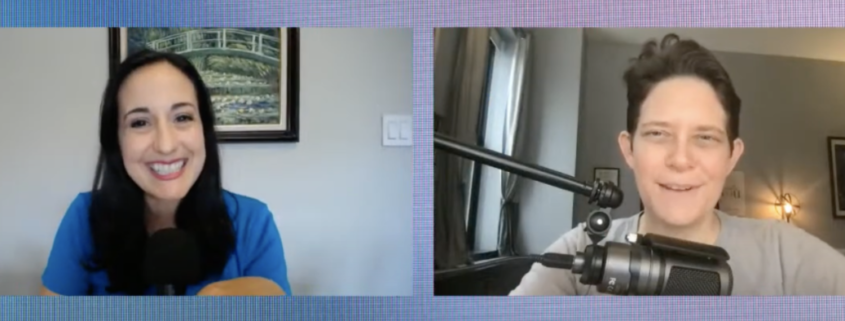Long-Term Thinking in a Short-Term World
___
BONUS FREEBIE: Want even more ways to stay organized, productive and less stressed? Click here to get access to my List-Making Starter Kit. It will boost your efficiency and get you back to doing more of the things you love.
___
It’s so easy to get caught up in instant gratification – especially these days with social media!
But true success takes time. And to accomplish your goals, you need to be a long-term thinker…despite our short-term world.
Author, keynote speaker, teacher for Duke University’s Fuqua School of Business, and one of the Top 50 business thinkers in the world by Thinkers50, Dorie Clark, joined me on my live-streaming show Inside Scoop to discuss her new book The Long Game: Long-Term Thinking in a Short-Term World.
Together we broke down why long-term thinking is difficult in today’s world. And what you can do to adjust your habits and move your career forward.
1) Long Term-Thinking vs. Short-Term Thinking.
Short-term thinking is about keeping yourself busy so you feel like you’re doing things. But you’re usually stressed out. Because being busy doesn’t mean you’re filling your time with important things.
Dorie suggests starting to look at how you spend your time. Start by asking “Am I doing what I should be doing in order to get where I want to go? Is this the right path? Or should I possibly reconsider or try a different strategy?”
If you’re not sure about your answers, Dorie’s got a self-assessment you can download to figure that out.
2) Becoming a Long-Term Thinker.
Dorie thinks becoming a long-term thinker is, “really just about creating enough space to be able to take a step back.” But that’s not always easy.
Of course, saying “no” is a helpful tool. But sometimes you can’t say no. One technique that Dorie suggests if you’re especially busy, is downgrading requests.
For example, instead of a lunch meeting, suggest a phone call. I like to block out time for myself on my calendar. Sometimes it’s to work on a project I love. Or just to take a break. I’ve found that blocking out time to do nothing helps me prioritize the right projects and leaves time for me.
If you do that consistently that time will start to really add up. And Dorie recommends aiming to carve out about twenty percent of your time for yourself.
___
Need some help reorganizing your time to include your goals? Join me in my LinkedIn Learning course “How to Set Boundaries and Protect Your Time.”
___
3) How to Use that Twenty Percent.
Decide how you want to develop yourself and use your time accordingly. As Dorie reminded me, “it’s about the process of investing in and getting better at something. Identifying something that you really would like to move the ball forward on.”
Using twenty percent of your time towards your goal works because if you don’t “succeed,” you didn’t waste too much of your time. (Of course, if you enjoy what you’re working towards it won’t feel like a waste even if you don’t reach the goal you set.)
But oftentimes, it does work. Twenty percent compounded over time can yield some incredible results.
For more be sure to check out Dorie’s new book, The Long Game: Long-Term Thinking in a Short-Term World.
___
BONUS FREEBIE: Want even more ways to stay organized, productive and less stressed? Click here to get access to my List-Making Starter Kit. It will boost your efficiency and get you back to doing more of the things you love.
___







Leave a Reply
Want to join the discussion?Feel free to contribute!